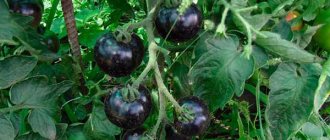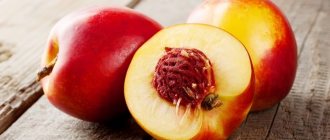There are more than a dozen edible types of onions. And if you have already decided on the varieties of onions or garlic (and they also belong to this genus) planted in your summer cottage, why not think about growing leeks?
It was actively cultivated as a food and medicinal plant back in Ancient Greece and Egypt, in medieval Europe it was held in high esteem on the tables of the rich, and today housewives value leek for its subtle delicate taste, abundance of vitamins C, E, PP and healthy potassium salts, calcium, sodium, phosphorus, iron.
Well, should you give it a place in your garden beds? And we will tell you the most successful and delicious varieties of pearl onions (this is its second name), which will definitely grow successfully in the conditions of the middle zone in general and the Moscow region in particular.
Leek varieties are divided into two large groups - early/mid-season and mid-season/late. The former grow quickly (80-130 days), have large, flat, light green or green leaves and a thick white “stalk” (the base of the stem, which is most prized in cooking). The latter ripen more slowly (180-200 days) and are distinguished by a shorter stem and thin blue-green leaves with a noticeable waxy coating. Study our Top 11!
Leek Goliath
It belongs to the mid-early varieties - you can start harvesting after 120 days, from July.
High-yielding. It is characterized by a large height (22-28 cm of the white part) and thickness (5-6 cm) of the stem. Weight of the product part is 150-200 g. The leaves are of medium width and length, gray-green, the bulb is poorly defined.
It is susceptible to various diseases, so it requires additional attention when caring for it.
The taste is good. The purpose is universal, used both fresh, dried and canned.
Leek Caranta
Refers to mid-late varieties that can be grown in one season - the first selective harvest can begin to be harvested after 125 days (approximately mid-September), it fully ripens in 200 days. It is recommended to grow seedlings (they must be 70 days old at the time of planting in the ground); they can be planted as a winter crop.
High-yielding. The spreading plant is characterized by an average height (10-25 cm of the white part) and thickness (4-5 cm) of the stem. Weight of the product part is 200-300 g. The leaves are long (up to 1 m), gray-green, the bulb is poorly defined.
Semi-sharp, excellent taste. The purpose is universal, used both fresh, dried and canned.
Climate requirements
Despite its origin and growth in a mild and warm climate, leeks are not a picky vegetable crop.
However, when planting it in the Urals, it is worth taking into account the short summer in the region and the high probability of spring frosts, which is most dangerous for a young plant. That is why, in order for the onion to germinate and get a little stronger, it must be grown using seedlings.
Leek Columbus
Refers to early varieties - you can start harvesting after 85 days.
High-yielding. It is characterized by a large height (20-30 cm of the white part) and thickness (5-6 cm) of the stem. Weight of the product part is 300-400 g. The leaves are of medium height (up to 80 cm), width and length, light green, the bulb is poorly defined.
The bleached part is formed virtually without hilling; this variety is cold-resistant and stores well.
Medium-hot, excellent taste. The purpose is universal, used both fresh, dried and canned.
Leek Vesta
Refers to mid-early varieties - you can start harvesting after 120 days.
High-yielding. It is characterized by a large height (25-50 cm of the white part) and a small thickness (2-3 cm) of the stem. Weight of the product part is 230-350 g. The leaves are tall (up to 140 cm), wide and long, light green, the bulb is poorly defined.
The variety is slightly susceptible to diseases, winter-hardy, heat-resistant. Requires regular hilling and fertilizing.
Sweet, excellent taste. The purpose is universal, used both fresh, dried and canned.
Main advantages and disadvantages
Advantages:
- cold-resistant;
- resistant to diseases;
- low calorie;
- a source of iron, calcium, magnesium, B vitamins, as well as PP and E.
Flaws:
- after consumption, like garlic, it gives a specific smell from the mouth;
- may cause flatulence;
- Harmful for people suffering from ulcers or stomach inflammation.
What is the difference from other varieties:
- edible at different stages of development;
- grows leaves until late autumn;
- During storage, the content of ascorbic acid increases.
Beneficial properties for the human body
Regular consumption of leeks helps in the treatment and prevention of the following diseases and conditions :
- atherosclerosis;
- avitaminosis;
- cardiovascular diseases;
- rheumatism;
- gout;
- nervous exhaustion;
- sleep disturbance;
- diseases of the biliary tract;
- decrease in hemoglobin;
- memory impairment;
- metabolic disorders.
Recommended by nutritionists, since 100 g of onion contains only 35 kcal. It is actively used in cosmetology as masks, peeling, hair growth stimulator and dandruff reliever. Strengthens the nail plate, treats sunburn and calluses.
Leek Elephant
Refers to mid-early varieties - you can start harvesting after 130 days.
High-yielding. It is characterized by a large height (20-30 cm of the white part) and thickness (4-5 cm) of the stem. Weight of the product part is 250-300 g. The leaves are tall (up to 150 cm), wide, bright blue-green, the bulb is poorly defined.
Resistant to high and low temperatures, stores well. Demanding about moisture and hilling, loves feeding.
Spicy, excellent taste. The purpose is universal, used both fresh and dried.
Late plant varieties
Winter varieties have good resistance to cold and frost. The growing season is long, from 180 to 200 days, and often the plants do not have time to finish their growth, so they have a short bleached part. It is good to grow winter varieties in a greenhouse. Some gardeners transplant the plant into nursery boxes before frost sets in. The most common winter varieties are:
- Bandit, having a short white stem. Direct sowing of seeds into the soil can be done at the end of July.
- Mercury. The growing season takes 175 days. The height of the white stem is 20 cm. It has a delicate, slightly pungent taste. Resistant to viral diseases.
- Quarantine. Good yield, especially in the second half of September. It has good taste and a cylindrical stem shape 5 cm wide.
Leek Tango
Refers to mid-early varieties - you can start harvesting in 115-125 days.
High-yielding. It is characterized by a small height (10-15 cm of the white part) and an average thickness (3-5 cm) of the stem. Weight of the product part is 200-250 g. The leaves are of medium height (up to 70 cm), width and length, dark blue-green, the bulb is poorly defined.
Resistant to low temperatures, pests and fungal diseases, suitable for long-term storage.
Semi-sharp, good taste. The purpose is universal, used both fresh, dried and canned.
Regions
To choose the right leek variety, you need to take into account the climatic characteristics of the region in which it will be cultivated.
Middle zone and Moscow region
In non-Black Earth regions, mainly mid-early varieties are planted; late-ripening varieties have time to ripen when grown by seedlings or sowing seeds in winter. Leeks are sown for seedlings from February 20 to March 20. Seeds are planted in a greenhouse or open ground under film at the end of April.
The best varieties for the Middle Zone:
- early - Vesta, Columbus, Gulliver;
- mid-season - Tango, Winner, Lancelot, Casimir, Kilima;
- later ones - Karantansky, Autumn Giant, Bandit.
Northwestern region
The difficulty of cultivating leeks in the northwestern regions lies in the late onset of heat and heavy rainfall in the autumn. The region mainly plants mid-early leeks, which are harvested in September, before the start of the rainy season.
Varieties of leeks resistant to fungal diseases and rot:
- Columbus, Shelton;
- Tango, Lancelot, Kilima.
Sowing crops using the winter method is not carried out in the region due to frequent and prolonged thaws.
Ural
In the climatic conditions of the Ural region, leeks are grown mainly as seedlings. Seeds are sown at the end of February, subject to additional lighting, or at the end of March. In the south of the Urals, it is permissible to plant leek seeds in a greenhouse in mid-April, and sow early varieties in open ground in early May.
For cultivation in the Urals, it is worth selecting cold-resistant varieties that can ripen in cool autumn conditions with the possibility of night frosts.
Varieties of leeks recommended for cultivation in the Urals:
- early ripening - Kalambus, Gulliver, Goliath;
- mid-season - Winner, Casimir, Tango;
- late ripening - Karantansky, Akreok, Sizokryly.
The varieties zoned for the Ural and Siberian regions are the Karantansky and Sizokryly leeks, which are distinguished by their high frost resistance.
Siberia
The climate of Siberia is characterized by late spring, short summer and periods of sharp cold spells in early autumn. Leeks are sowed for seedlings in March. In the south of the region, seeds of early varieties are sown in a greenhouse in late April - early May.
Hardy and cold-resistant varieties of leeks that are resistant to sudden temperature changes are suitable for growing in Siberia:
- early ripening varieties - Columbus, Goliath, Gulliver;
- medium ripening - Winner, Tango, Lancelot.
Late-ripening hardy varieties (Karantansky, Sizokryly) are planted in winter in October and provide reliable shelter.
South of Russia
In the southern regions, leeks are grown by sowing seeds in open ground. Early varieties are sown for seasonal consumption and processing, late varieties are sown for storage. In regions with a warm climate, most varieties of the crop can be grown. They are distinguished by heat resistance and undemandingness to moisture - Columbus, Vesta, Elephant (Elephant), Autumn Giant, Alligator.
Varieties of leeks differ significantly from each other in terms of growing season, appearance, and taste. When choosing leek seeds for planting, the highest priority is the ripening period, which determines the success of growing and obtaining a decent harvest of the crop.
Leek Winner
Refers to mid-season varieties - start harvesting in 130-150 days.
High-yielding. It is characterized by an average height (up to 20 cm of the white part) and an average thickness (3-4 cm) of the stem. Weight of the product part is up to 200 g. The leaves are of medium height (up to 80 cm), width and length, gray-green with a bluish bloom, the bulb is poorly defined.
The variety is frost-resistant.
Slightly spicy, excellent taste. The purpose is universal, used both fresh and dried.
Leek Alligator
It belongs to the mid-late varieties - you can start harvesting after 160 days, from September.
High-yielding. It is characterized by a large height (20-30 cm of the white part) and an average thickness (4 cm) of the stem. Weight of the product part is 250-300 g. The leaves are of medium width and length, gray-green, raised, the bulb is poorly defined.
Suitable for growing greens with a delicate taste and pleasant garlic aroma.
Semi-sharp, excellent taste. The purpose is universal, used both fresh, dried and canned.
Planting seedlings
In the fall, fertilize the beds with organic and mineral fertilizers, such as overripe compost manure, potassium chloride, superphosphate. If you have not prepared the bed in the fall, add 14-16 g of urea or 17-22 g of ammonium nitrate to the soil in the spring. Make sure the loose soil is not acidic. In heated soil, cut ditches to a depth of 13-16 cm and place the seedlings. Place the ditches at a distance of 35-45 cm from each other.
Do not plant tightly so that the plant does not need to be replanted in the summer. Cover or mulch the plant. If the mulch is high, the stem will become strong, tall and with a delicate aroma.
Tall and early varieties are recommended to be planted in groups of 3 or 4, at a distance of 50-60 cm from each other. When growing leeks with other plants, remember that they are suitable for growing with tomatoes, cucumbers, radishes, carrots and herbs such as lettuce, celery and spinach. It serves as reliable protection for cabbage, carrots and strawberries from pests and diseases.
Leeks repel pests of cabbage, strawberries and carrots.
Leek Premier
It belongs to the mid-late varieties - you can start harvesting after 160 days, from September.
High-yielding. It is characterized by an average height (up to 20 cm of the white part) and an average thickness (4-5 cm) of the stem. Weight of the product part is 380-430 g. The leaves are of medium width and length, blue-green, densely spaced, with a waxy coating, the bulb is poorly defined.
A very winter-hardy variety.
Slightly spicy, excellent taste. The purpose is universal, used both fresh, dried and canned.
How to grow in the Urals?
Preparation
- It all starts with the preliminary preparation of seeds for planting. It consists, first of all, of soaking to increase seed germination. How does this process happen? The seeds are wrapped in a damp cloth and kept warm until sprouts appear. This usually takes from 1 to 3 weeks. After they appear, you can proceed directly to planting.
- If you don’t have the opportunity to buy a special soil mixture for onions, that’s okay - you can use any soil. The main thing is that it is rich in nutrients. Next, prepare a container for planting. This could be a small box with holes for drainage.
- Fill the container with soil, make shallow grooves (no more than 2 cm), between which leave a distance of about 5 cm. Place seeds in each groove, moisten the soil with a sprayer and cover with a thin layer of soil. After planting, cover the container with film and place in a warm place.
Care
When the first shoots appear, the film is removed and the seedlings are transferred to a cooler place (the air temperature at night should not be lower than +12). For fast and healthy growth of seedlings, it is important to follow two basic rules:
- sufficient lighting;
- optimal humidity.
Attention!
Both dry and overly wet soil can lead to the death of a fragile plant.
A month after germination, it is necessary to thin out the seedlings, leaving 3 cm between the bushes. Then maintain the length of the plants at 10-12 cm - cut off the excess.
Do not forget that too massive greenery can draw all the nutrients from the seedlings and weaken its root system.
Planting in open ground
Planting in open ground should only be done when the air temperature remains above zero both day and night.
- Water the container with the seedlings generously.
- Carefully remove the plants from the container one at a time, being careful not to damage the roots.
- Make holes in the garden bed about 10 cm deep.
- Then pour a little humus into them and plant the seedlings at the same depth at which they grew in the container.
- Add water.
Care
- Leeks are a moisture-loving plant, so they need regular watering. Of course, its frequency directly depends on the weather and amount of precipitation. So, in dry and hot summers, moderate watering every other day is necessary.
- To strengthen the stem, you need to hill up the onion every other week using a small spatula. Until mid-summer, the plant mostly needs abundant feeding. Bird droppings work well for this.
- Remember to regularly remove weeds around the onions.
Article on the topic
Planting leeks in open ground and caring for the crop.
Leek Bluewing (Bulgarian)
Refers to late varieties - you can start harvesting after 200 days.
High-yielding. It is characterized by an average height (up to 20 cm of the white part) and an average thickness (4.5-5.5 cm) of the stem. The weight of the product part is about 120-160 g. The leaves are of medium width and length, dense, fan-shaped, dark blue-green, with a strong waxy coating, the bulb is poorly defined.
Very winter-hardy, stores well.
Slightly spicy, excellent taste. The purpose is universal, used both fresh, dried and canned.
Features of the plant
The main nutritional value of leeks is represented by the white stem. The early young leaves of the plant, which are similar to the garlic leaves we are used to, can also be eaten, as they are also enriched with minerals and vitamins. The size of the stem largely depends on the growing conditions, as well as on the type of leek, and can vary in height from 15 to 45 cm, in width from 3 to 8 cm. Leeks can be stored for up to six months without losing their vitamin properties. Be sure to trim off the roots and leaves. The seeds of this onion are smaller than those of the onion variety and remain viable for 3 years. And it does not form bulbs, like its onion counterpart.
Leek varieties are cold-resistant. They are not afraid of frosts down to -8°C. Therefore, it can be in open ground from early spring to late autumn.
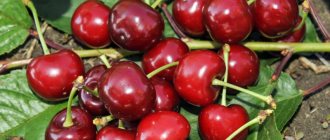
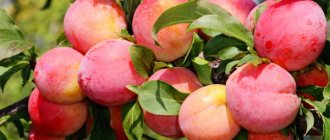

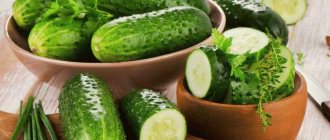




![Tinkoff (Debit card) [CPS] RU](https://adzumi-sushi.ru/wp-content/uploads/tinkoff-debetovaya-karta-cps-ru41-330x140.jpg)

